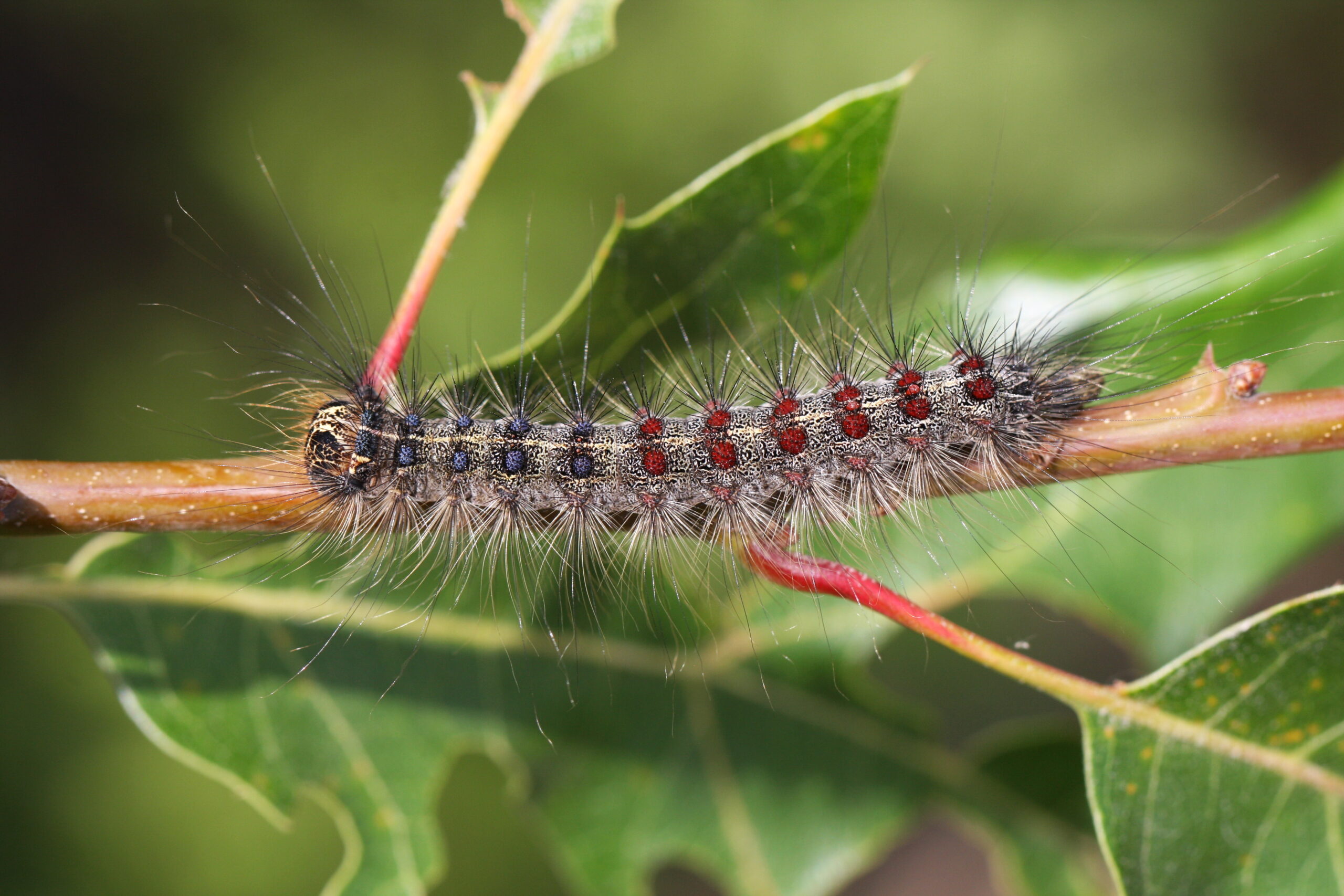Like other animals, insects are preparing for winter. Larry Meiller finds out what Boxelder bugs and other plentiful fall insects are up to, and why we have been so lucky to see many Whitelined Sphinx Moths this year. Plus, answers to listener questions, and a strange story of a traveling tick.
Featured in this Show
-
Expert: It’s A Banner Year For Whitelined Sphinx Moths In Wisconsin
No year is quite like another when it comes to insect populations, according to a prominent Wisconsin entomologist.
Phil Pellitteri, the director of the University of Wisconsin-Madison Insect Diagnostic Lab, said that many have heard about the low levels of monarchs and other butterflies this year. But, a cousin of the insect is now showing up in large numbers in Wisconsin: the whitelined sphinx moth.
Sphinx moths are sometimes mistaken for hummingbirds because of their large size, the way that they hover over flowers and because they are active during the day instead of at night.
But unlike hummingbirds, Pellitteri said, “They’re great photographic subjects because even if you’re sneaking up with your camera, they just ignore you, where, of course, hummingbirds would just take off.”
While there are more than one species of sphinx moth in Wisconsin, it’s the whitelined type that has been very common this year. The adults have some pink in the hind wings and then the white striping on the front, which gives them their name. The caterpillars are a variety of hornworm that comes in a black form with yellow markings, or a green form with black dots “and everything in between,” Pellitteri said.
“So, they’re very variable,” he said.
A listener who identified herself as Bunny from Racine reported that in the past two years, she saw a clearwing sphinx moth.
“It was just the most unusual thing I’ve ever seen!” she said. The woman described it as having what resembled a little bottle brush on its tail end and what looked like little windows on its wings. Pellitteri said that there are two species of clearwing hawk, or sphinx, moths in Wisconsin. They are the Snowberry clearwing and the hummingbird moth. He said that while moths are characterized by having scales over their entire wings, the clearwing moths are missing them in certain areas, which creates that unusual appearance. They mimic bumblebees in their size and the clearness of the wings.
Pellitteri said that there are still some caterpillars present, but instead of turning into moths this season, “they’ll burrow into the ground and pupate in the ground, and won’t emerge until next year.”
The pupae are dark, chestnut brown and about 2 and a half inches long.
“It looks kind of like a cigar,” he said
The adults, on the other hand, will stay active as long as the weather allows so if the weather stays temperate, “a couple of weeks more wouldn’t surprise me,” he said.
A banner year for sphinx moths seems to come around every six or seven years, Pellitteri said, but it’s hard to know what causes it in a particular season. An entomology colleague of Pellitteri’s is studying them as a pollinator for columbine and she reports catching eight to 10 of them each evening lately at the Allen Centennial Gardens on the UW-Madison campus.
The whitelined sphinx moth is native to Wisconsin and is the most common one seen, but two other species in the same genus are also present in the state. They eat purslane, which is often considered a weed, and other plants as well. For those who might want to try and attract them, Pellitteri said, “Verbena seems to work quite well. I’ve seen them working anything in the aster family. But, nothing would surprise me because again, they’re looking for nectar. If it’s in bloom, they’re going to be drinking.”
Episode Credits
- Larry Meiller Host
- Judith Siers-Poisson Producer
- Phil Pellitteri Guest
Wisconsin Public Radio, © Copyright 2024, Board of Regents of the University of Wisconsin System and Wisconsin Educational Communications Board.

